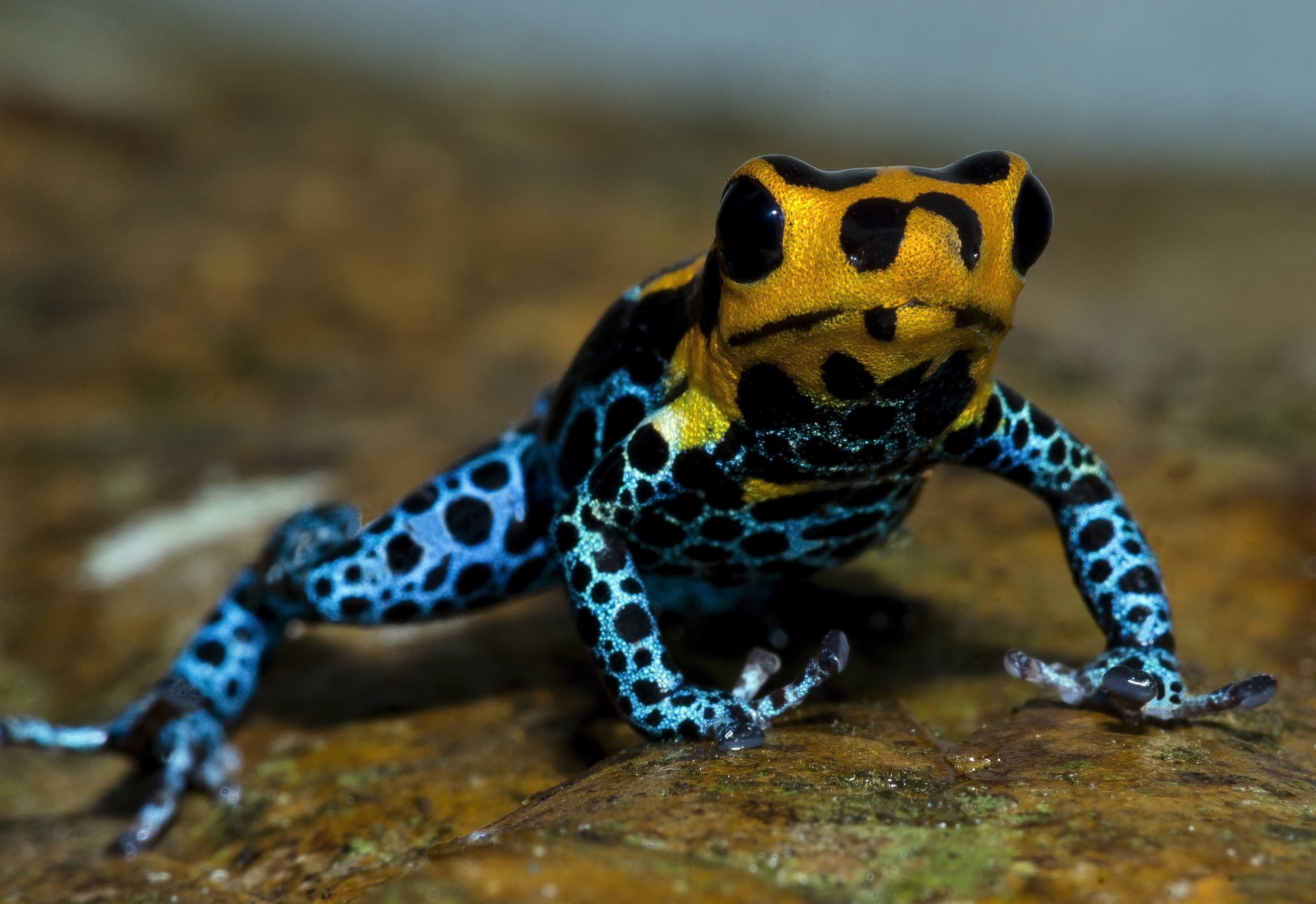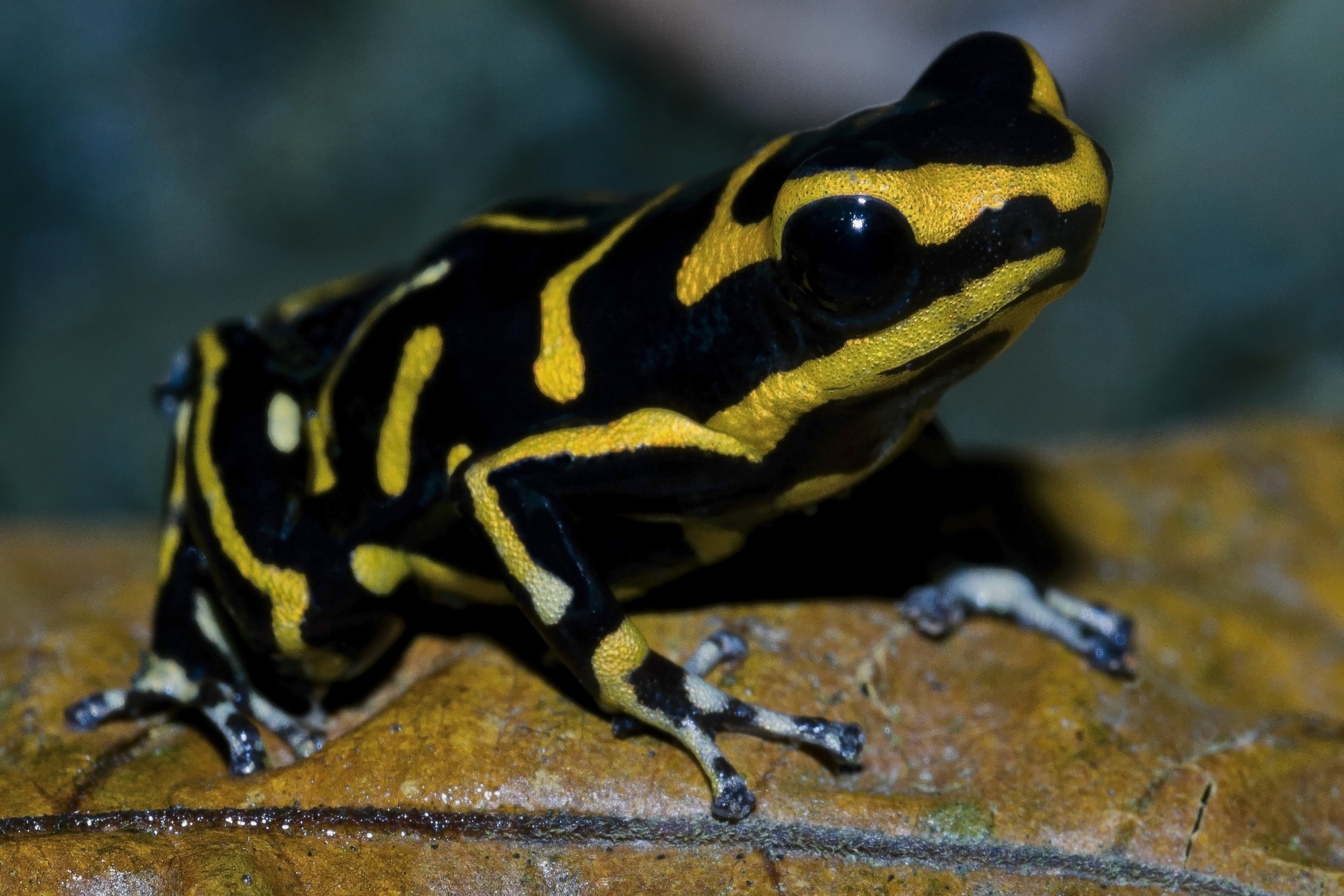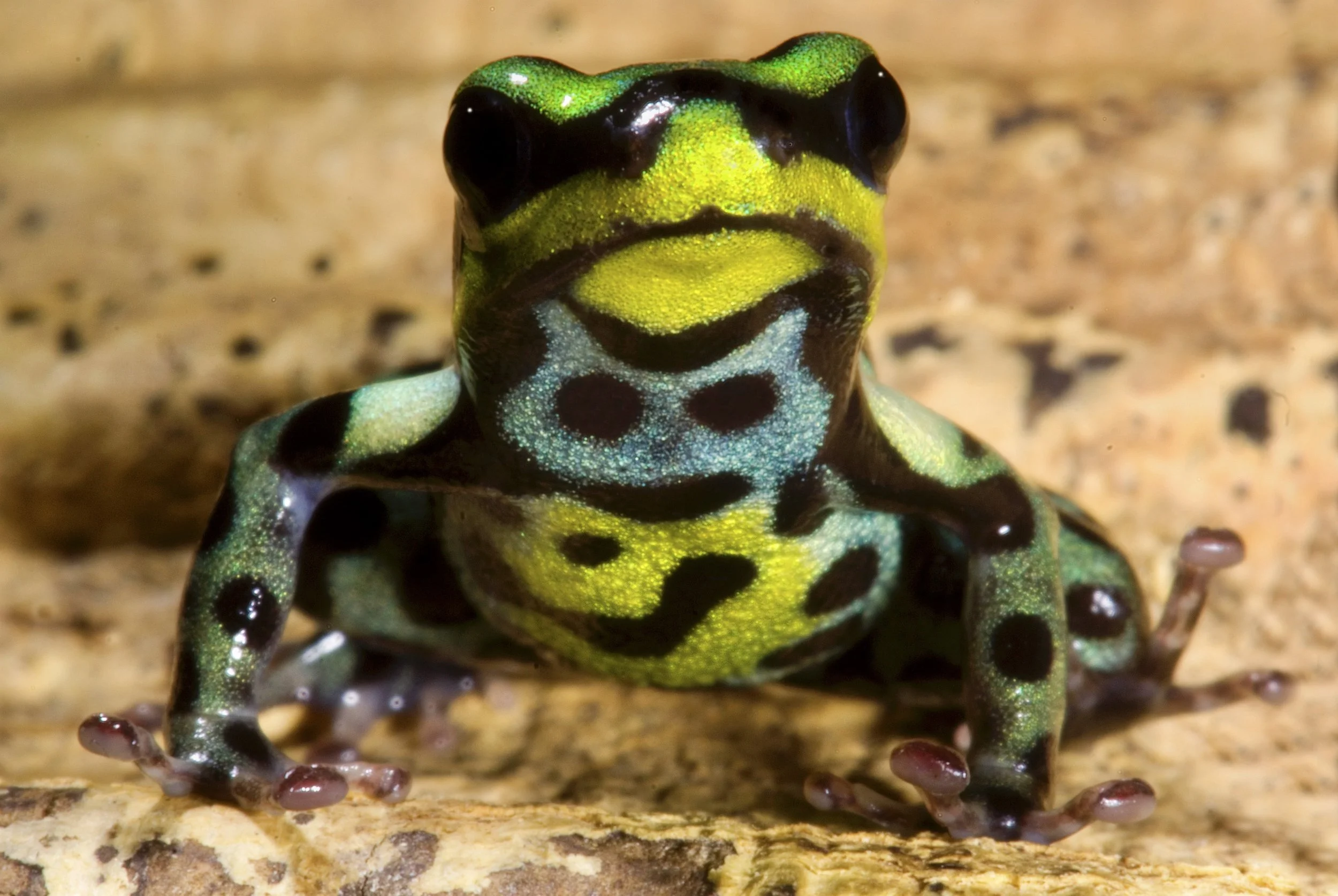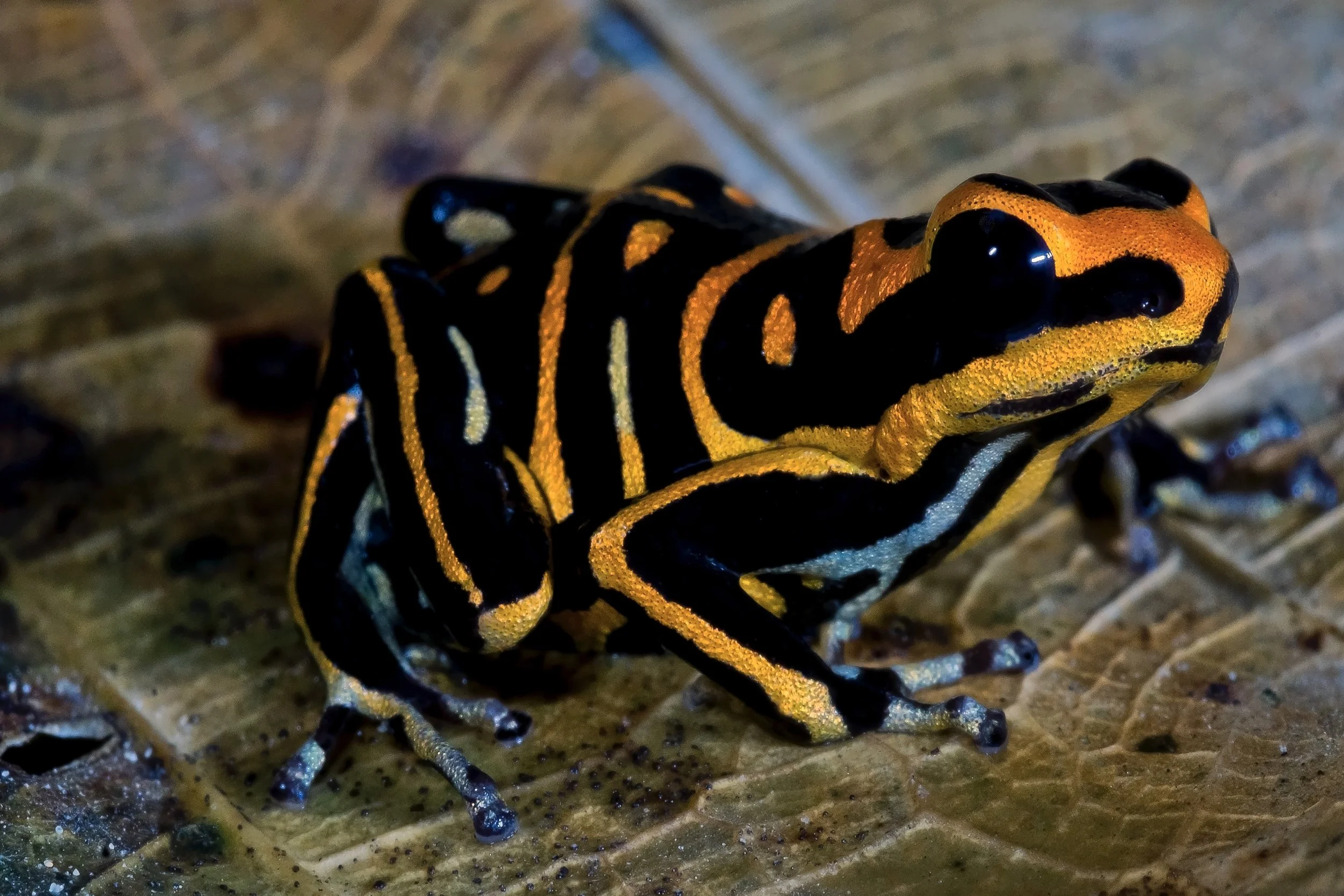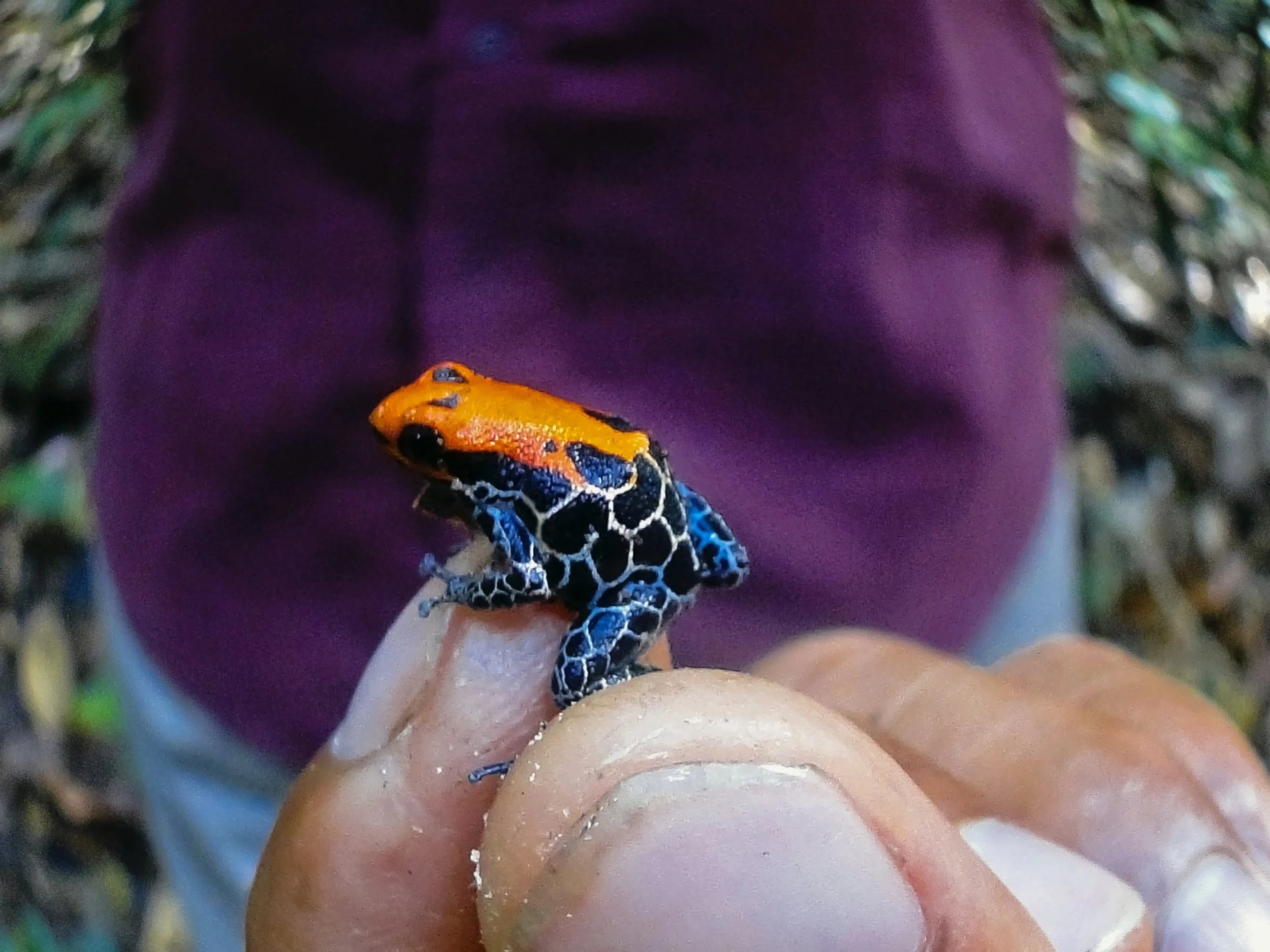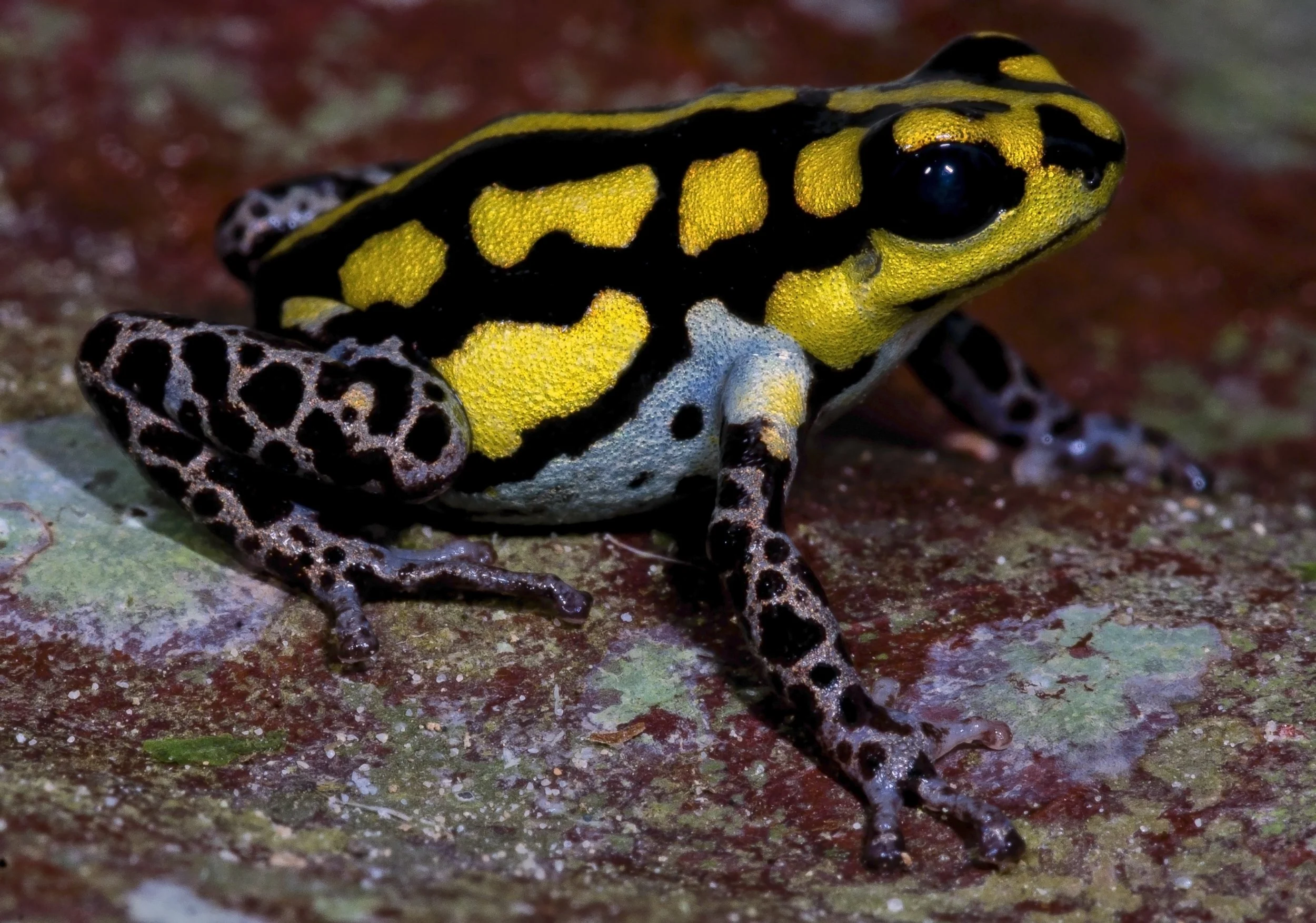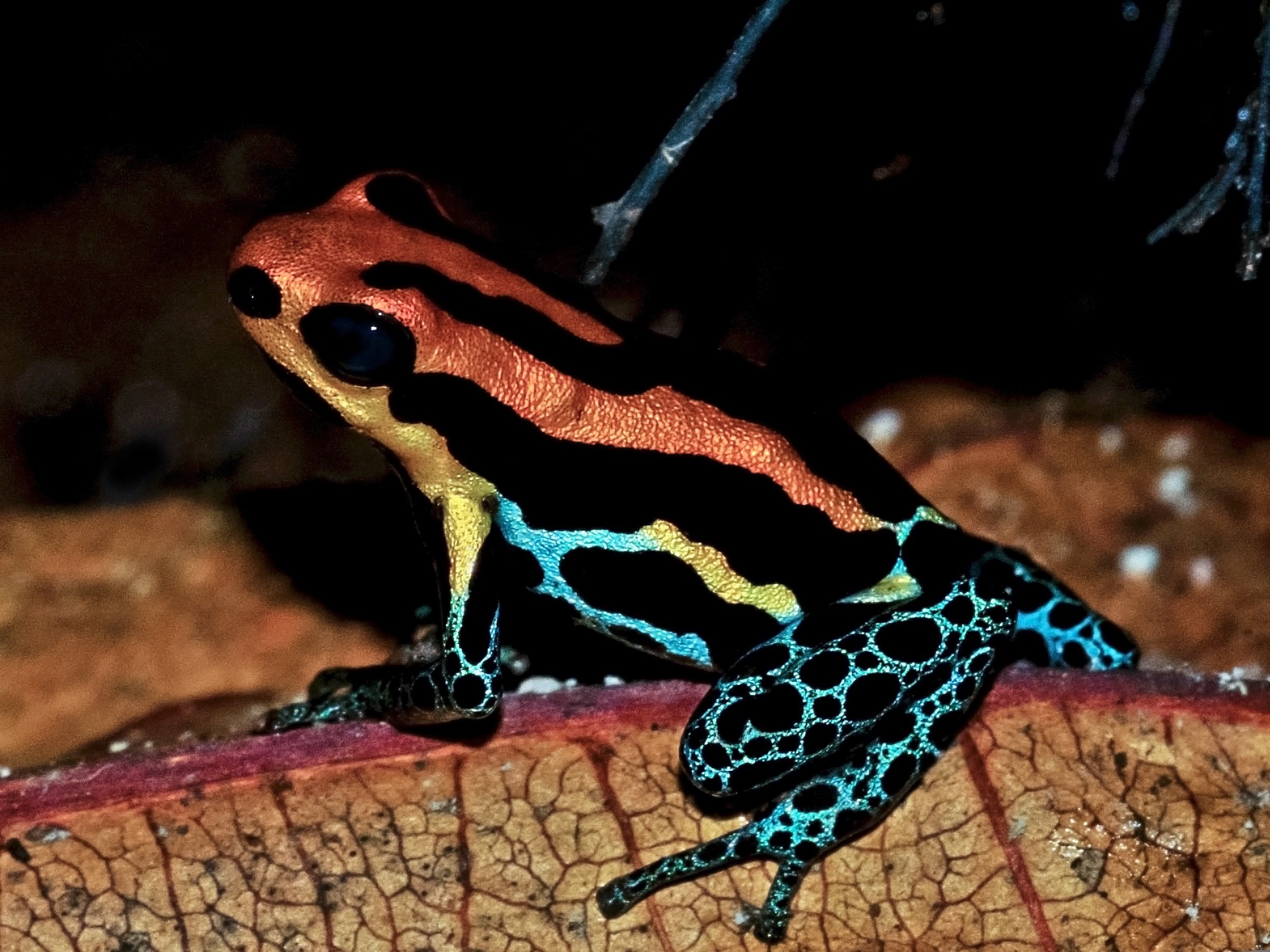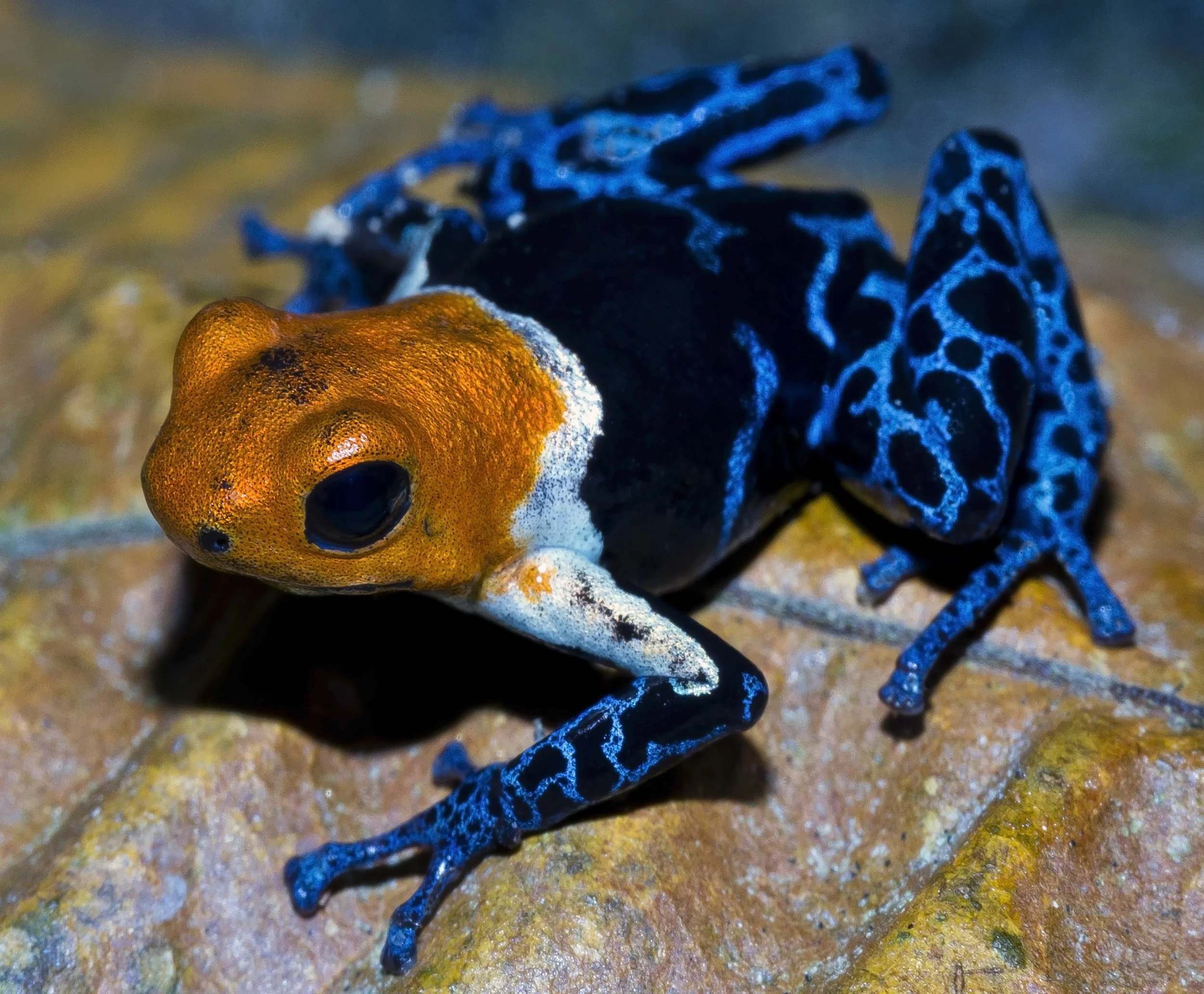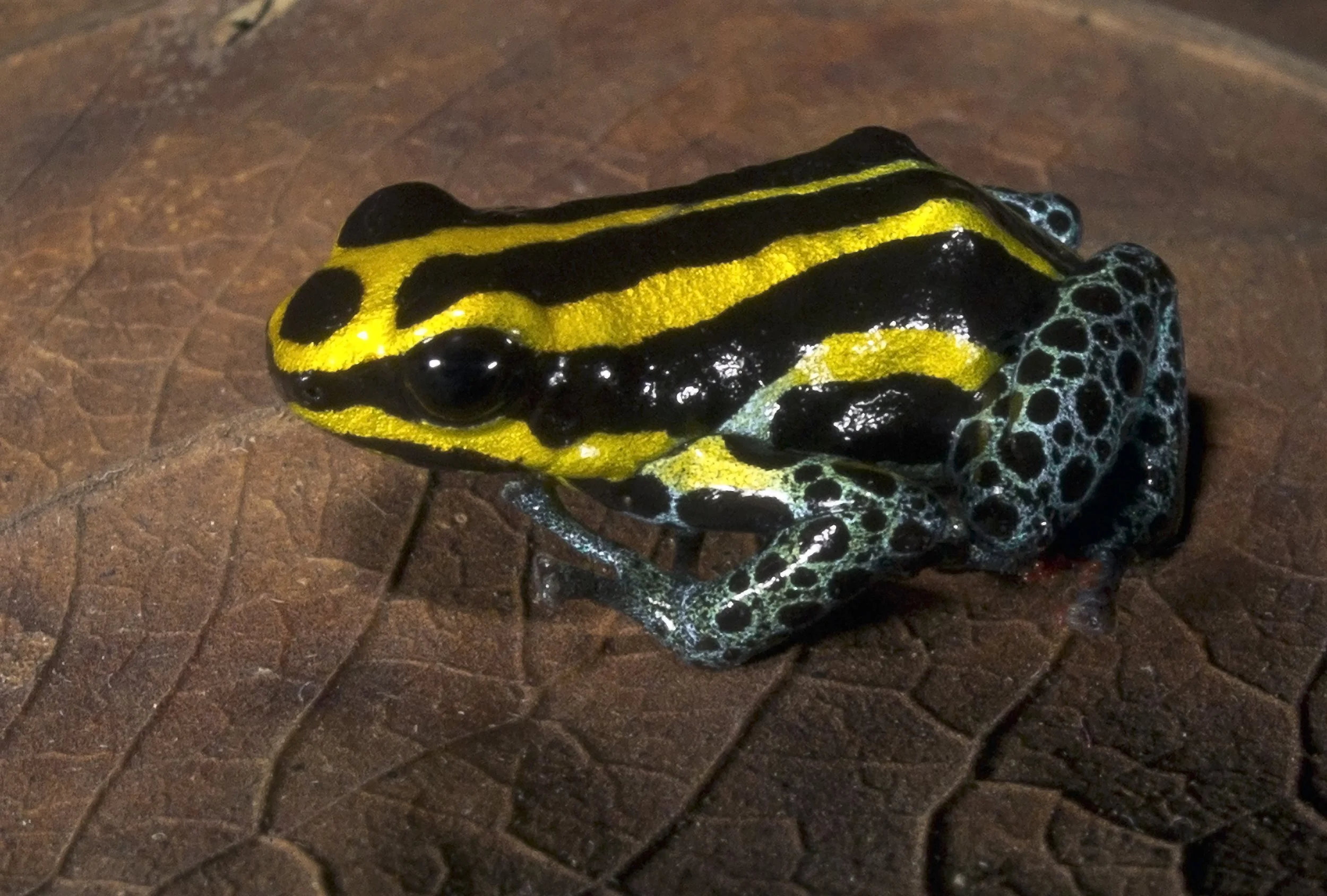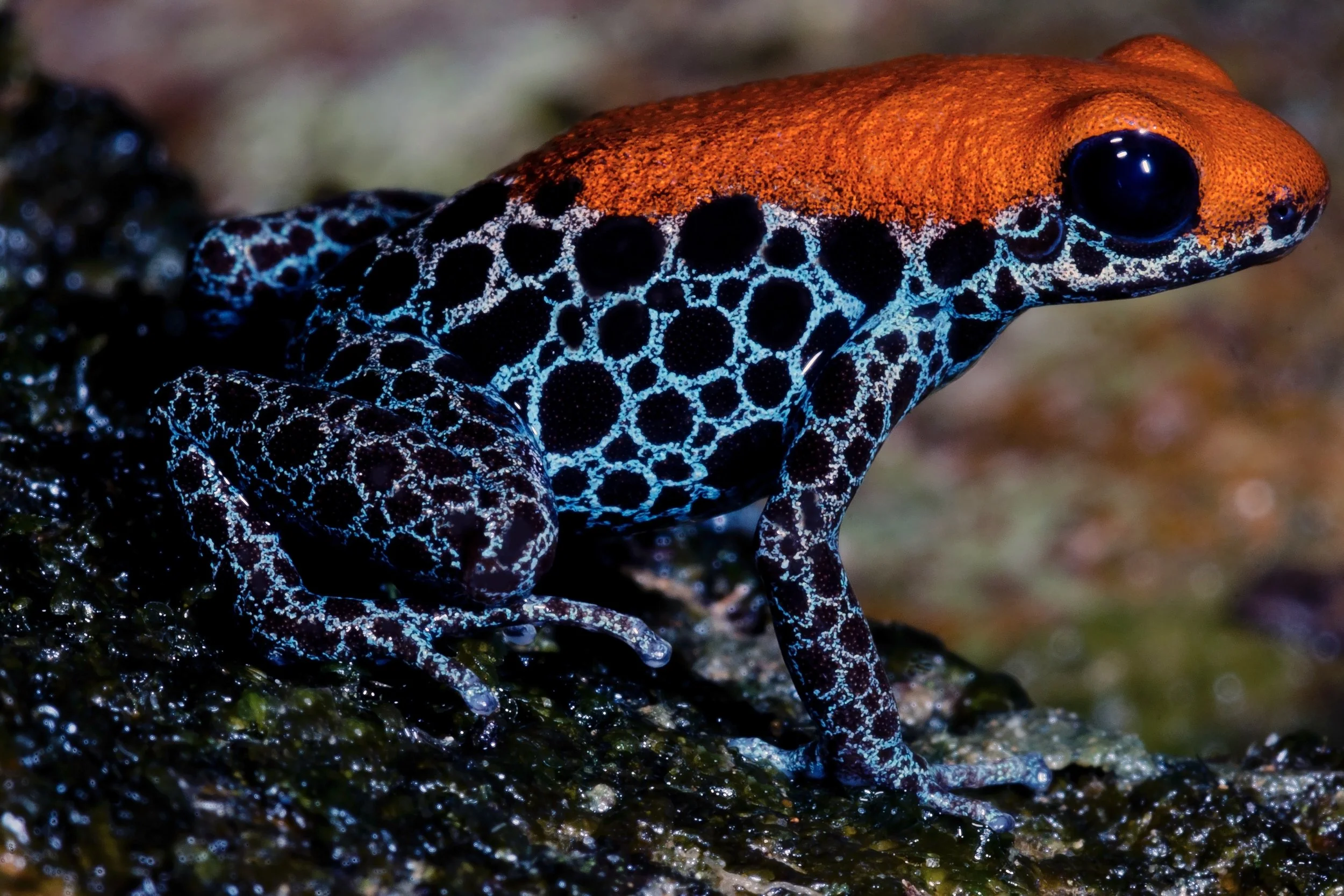Poison Frog Porn, Part III: Perú
Frogs Gone Wild - Full Frontal, maestro
by Jay Vannini
Ranitomeya imitator from the Río Paranapura, Loreto Department. Image: ©D. Fenolio 2022
The popularity of New World poison or dart frogs (Dendrobatidae) as exotic pets or subjects for research continues to increase as ever more colorful new species are discovered and introduced to herpetoculture. Several variably-colored species are now regular offerings in pet store chains that operate in the U.S. and EU. While poison frogs that are native to Venezuela and the Guianas (Dendrobates tinctorius and D. leucomelas) as well as Central America (D. auratus and Oophaga pumilio) are still the most commonly-seen species in captivity, greater numbers of frogs originating from western Colombia and Perú are now also bred routinely in northern countries as well as at export-focused projects in origin. Prices for domestically-produced poison frogs have declined steeply over the past decade and this development has played a major role in bringing these animals into the mainstream vivarium trade.
Given the dazzling variety of poison frogs now available to enthusiasts, it is nigh-impossible to say what species or forms are the most beautiful. That said, when viewed in total it is hard to argue that the variety of color and pattern seen in the Peruvian poison frog fauna puts it over the top despite Colombia’s greater overall dendrobatid diversity and some pretty snazzy-looking frogs occurring there, too.
Perú harbors nine of the 20 dendrobatid genera that are currently recognized (AmphibiaWeb, 2022). Three (Allobates, Colosthetus and Leucosthetus) contain rather nondescript-looking species, Ameerega has both plain-colored and showy species, while the remaining five genera (Epipedobates, Adelphobates, Excidobates, Ranitomeya and Hyloxalus) include mostly showy- to startlingly-colored species. The dust on dendrobatid taxonomy has not yet settled by a long shot, and there are undoubtedly new genera and many new species pending description, so these numbers will change in the very near future.
As was the case in previous frog galleries posted here, I will let the images speak for themselves so that the reader may decide what species or color morph is the most striking of all. Personally, I have given up on choosing a favorite dendrobatid. In all honesty, there are just too many impossibly beautiful critters out there to select even a handful of most-preferreds. The specific epithets of several Peruvian poison frogs speak to their remarkable appearances, e. g., fantastica, benedicta, imitator, reticulata, etc.
We’re still missing a species name that alludes to Ayahuasca-induced hallucinations, but I’m pretty sure one will be published shortly.
Bill Lamar very kindly assembled the original rough cut for this gallery gathered from among dozens of his own images and those of a few close friends and colleagues, all taken in Perú. So, the author credit is rightfully his; I just curated the final article selections based on my own aesthetic preferences and added the blah-blah-blah you’re reading here.
Rather than acknowledging the other photographers at the end of this article, I’ve decided to thank them now before anyone becomes mesmerized by the magic of their art and doesn’t make it all the way through. Danté Fenolio and Roel De Plecker contributed many of the shots shown in this gallery and–together with Bill Lamar–I’m extremely grateful for their contributions. All images shown here are photographer-copyrighted.
For those unfamiliar with these types of frogs and for reference purposes, it’s worth mentioning that most of them are extremely small; in some cases (e.g. Ranitomeya reticulata at 2/3”-1.6 cm overall) maturing well under 1” or 2.5 cm snout-to-vent length. They are often fast and active and can be extremely challenging to photograph in nature.
In closing, Bill’s friend Mark Pepper of Understory Enterprises Inc. in Canada has championed the cause of captive-produced, legally-imported, Peruvian dendrobatids for well over a decade. The popularity and ready availability of these animals in northern countries at this point is largely due to his investment in making this unique and threatened natural resource a sustainable one.
On to the naughty bits!
Ranitomeya summersi reticulate morph. Image: ©D. Fenolio 2022
Ranitomeya benedicta yellow-head morph. Image: ©R. De Plecker 2022
Ranitomeya fantastica. Image: ©D. Fenolio 2022
Ranitomeya sp. Image: ©R. De Plecker 2022
Ameerega bilinguis. Image: ©W. W. Lamar 2022
Ranitomeya benedicta red-head morph. Image: ©D. Fenolio 2022
Ameerega trivittata. Image: ©D. Fenolio 2022
Ameerega silverstonei. Image: ©R. De Plecker 2022
Ameerega bassleri blue morph. Image: ©D. Fenolio 2022
Ameerega trivittata. Image: ©W. W. Lamar 2022
Ameerega pongoensis. Image: ©D. Fenolio 2022
Ranitomeya imitator. Image: ©R. De Plecker 2022
Ameerega trivittata. Image: ©W. W. Lamar
A Ranitomeya lamasi that appears to have donned a colorful owl-decorated turtleneck T-shirt for the photo shoot. Image: ©D. Fenolio 2022
Ranitomeya summersi. Image: ©D. Fenolio 2022
Why they are called thumbnail poison frogs. A mature Peruvian Ranitomeya ventrimaculata in hand. Image: ©W. W. Lamar 2022
Ranitomeya flavovittata. Image: ©D. Fenolio 2022
Ranitomeya sp. Image: ©W. W. Lamar 2022
Ranitomeya variabilis. Image: ©D. Fenolio 2022
Ranitomeya amazonica. Image: ©D. Fenolio 2022
Ameerega bassleri. Image: ©D. Fenolio 2022
Ranitomeya amazonica. Image: ©W. W. Lamar
Ranitomeya reticulata. Image: ©W. W. Lamar 2022
Ranitomeya sirensis. Image: ©D. Fenolio 2022
Ranitomeya fantastica. Image: ©R. De Plecker 2022
Ameerega pepperi. Image: ©W. W. Lamar 2022
Ranitomeya uakarii. Image: ©W. W. Lamar 2022
Ranitomeya variabilis. Image: ©W. W. Lamar 2022
Ameerega parvulus. Image: ©W. W. Lamar 2022
Ranitomeya amazonica. Image:©D. Fenolio 2022
Ranitomeya lamasi. Image: ©D. Fenolio 2022
Ranitomeya reticulata. Image: ©D. Fenolio 2022
